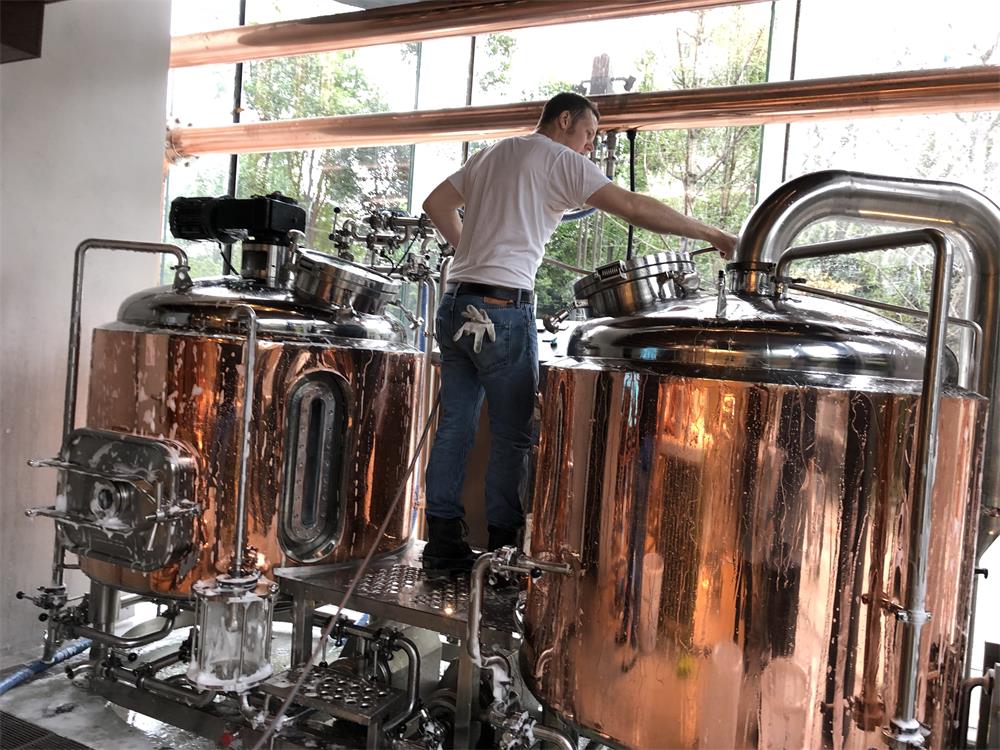5 Vessel Brewhouses: Speed, Efficiency, and Brewing Mastery
When you think of beer brewing, images of bubbling kettles and steamy vats might come to mind. But behind the scenes, in professional breweries, it’s the sophisticated machinery that makes magic happen. One such marvel is the 5 Vessel Brewhouses. It’s like the Swiss Army knife of brewing—versatile, efficient, and tailored for large-scale production. Let’s explore this brewing powerhouse in detail, uncovering what makes it a favorite for breweries striving to blend efficiency with artistry.
What Is a 5 Vessel Brewhouse?
A 5 Vessel Brewhouse is a brewing system designed for industrial-scale operations. It’s named after its configuration of five separate vessels: the mash tun, lauter tun, brew kettle, whirlpool, and hot liquor tank. Each vessel has a specific role, ensuring the brewing process flows seamlessly from one stage to the next.
Think of it as a high-performance orchestra, where each instrument (or vessel) plays a critical role in creating a symphony of flavors. This setup not only optimizes production but also enhances the quality and consistency of beer.
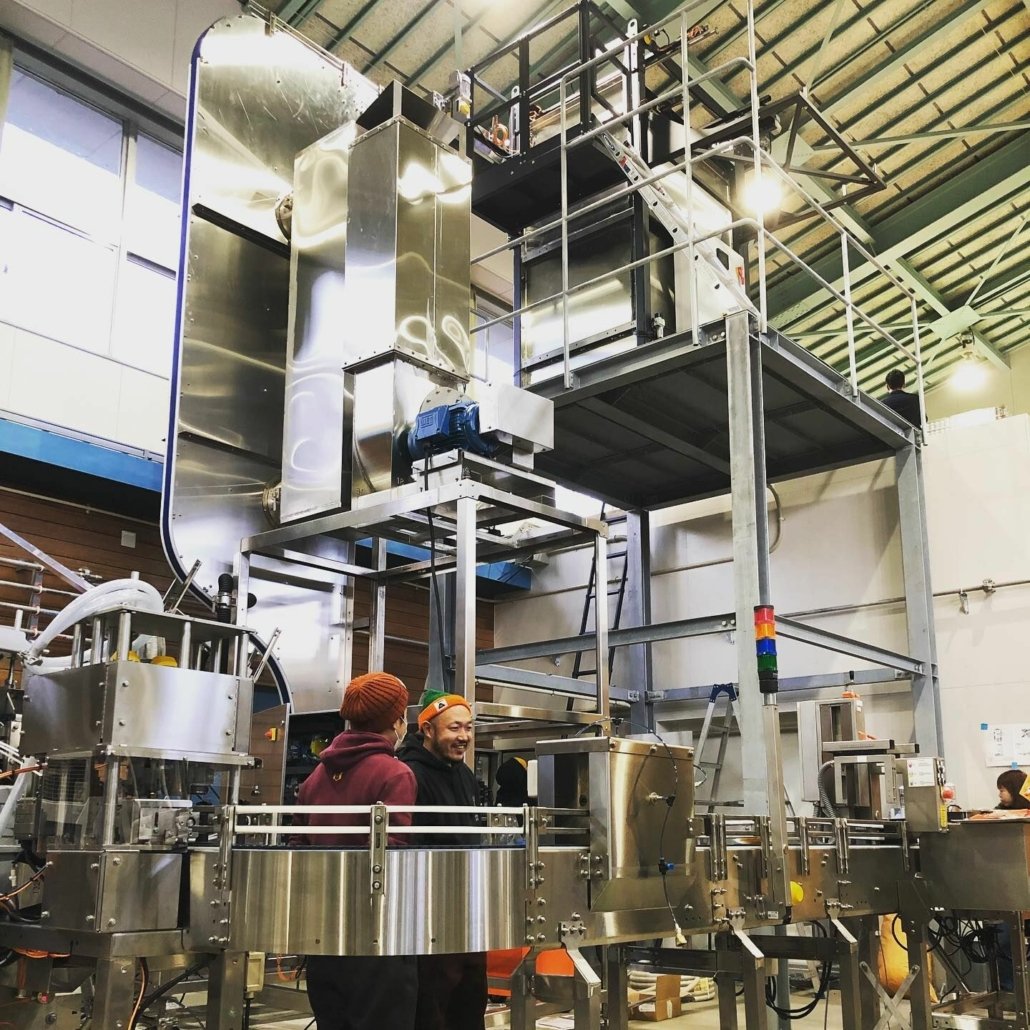
5 Advantages of a 5 Vessel Brewhouse
Why should breweries consider a 5 Vessel Brewhouse? Here are five game-changing advantages:
1. Enhanced Efficiency
With each vessel dedicated to a single task, the brewing process becomes a well-oiled machine. Simultaneous operations like mashing, lautering, and boiling can occur without delays, cutting down production time significantly.
2. Higher Production Capacity
Whether brewing IPAs or stouts, a 5 Vessel Brewhouse can handle large batch sizes. It’s perfect for breweries scaling up to meet market demand without compromising on quality.
3. Improved Beer Quality
Precision is the name of the game. Each vessel’s specialized function allows brewers to control variables like temperature and timing meticulously, ensuring consistency and exceptional flavor profiles.
4. Flexibility
A 5 Vessel Brewhouse can handle various brewing styles and recipes. Want to experiment with a new ale? No problem. The system’s adaptability lets brewers innovate without major adjustments.
5. Reduced Operational Costs
While the initial investment is significant, the efficiency and output make it a cost-effective choice in the long run. Less downtime, fewer errors, and higher yields mean better ROI.
What Types of Breweries Are Most Suitable for Using 5 Vessel Brewhouses?
Not every brewery needs a 5 Vessel Brewhouse. These systems shine in medium to large-scale operations, such as:
- Craft Breweries Scaling Up: Those transitioning from small batch production to larger markets.
- Commercial Breweries: Producing diverse beer styles in significant quantities.
- Innovative Breweries: Experimenting with new recipes and needing precision equipment.
- Export-Oriented Breweries: Catering to global markets where consistency is key.
Small-scale or niche breweries might find it more practical to stick with simpler systems, but for those dreaming big, the 5 Vessel Brewhouse is a worthy investment.
Meeting Brewery Production Needs Through 5 Vessel Brewhouses
Here’s a detailed table to explain how 5 Vessel Brewhouses meet the demands of breweries of different scales:
| Brewery Scale | Production Needs | 5 Vessel Brewhouse Solutions |
|---|---|---|
| Small-Scale Craft | Experimentation, quality over quantity | Precision and flexibility for small batches and varied recipes. |
| Medium-Scale Craft | Consistent quality, growing market demand | Efficient batch processing and scalable production. |
| Large Commercial | High volume, diverse styles, export-ready | Simultaneous operations, high capacity, and advanced automation. |
| Global Breweries | Massive output, global consistency | Maximum efficiency, minimal downtime, and robust quality controls. |
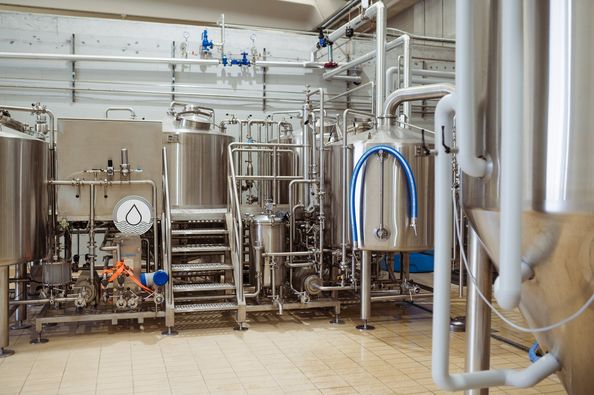
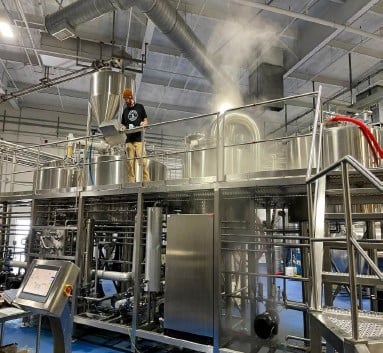
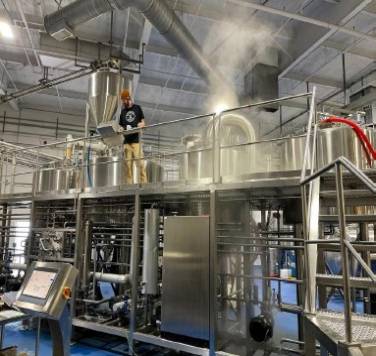
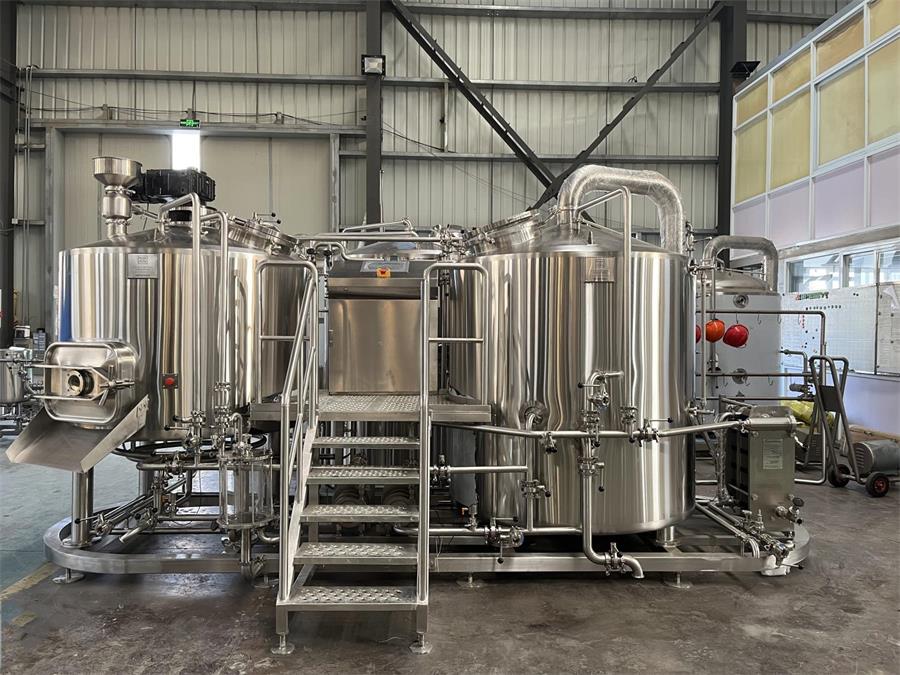
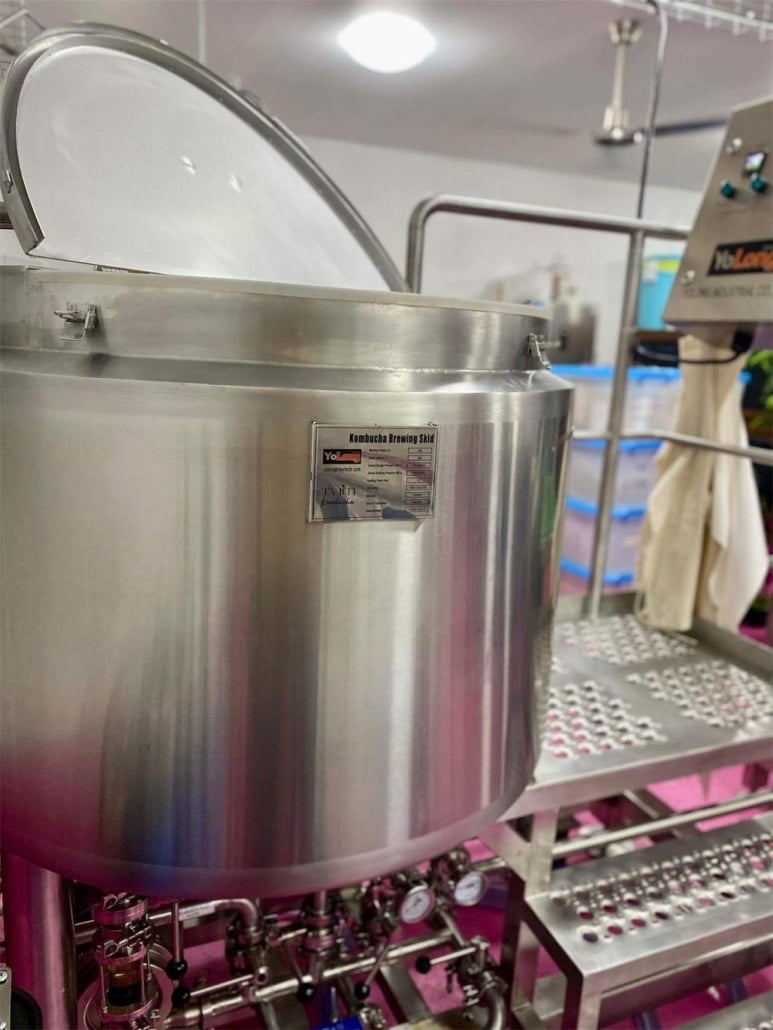
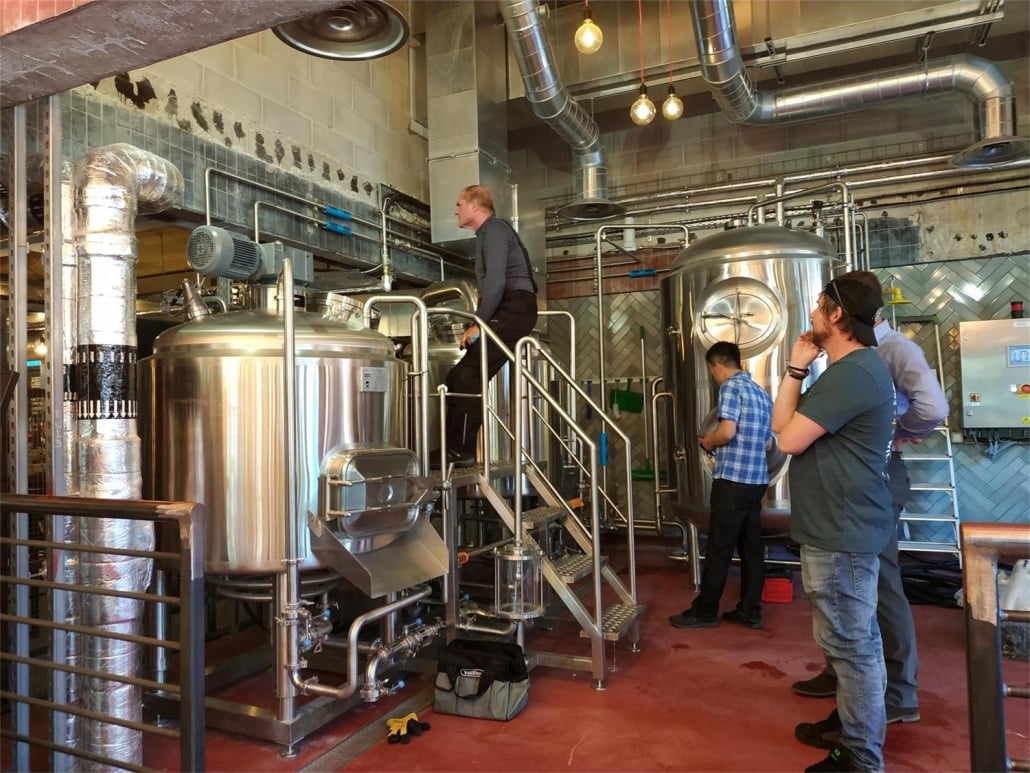
Technical Features of 5 Vessel Brewhouses
A 5 Vessel Brewhouse is packed with features that cater to modern brewing needs. Let’s break them down:
- Automation: Most systems are fully automated, allowing precise control over every stage.
- High-Quality Materials: Stainless steel construction ensures durability and hygiene.
- Energy Efficiency: Heat recovery systems reduce energy consumption, lowering operational costs.
- Compact Design: Despite their capacity, these systems often come with space-saving designs.
These features aren’t just bells and whistles—they’re essential for breweries aiming for top-notch results.
Comparison Between 5 Vessel Brewhouses and 2, 3, and 4 Vessel Brewhouses
Let’s see how the 5 Vessel Brewhouse stacks up against its counterparts:
| Feature | 2 Vessel | 3 Vessel | 4 Vessel | 5 Vessel |
|---|---|---|---|---|
| Efficiency | Moderate | Improved | High | Exceptional |
| Production Speed | Slow | Moderate | Faster | Lightning Fast |
| Capacity | Limited | Moderate | High | Maximum |
| Cost | Low | Moderate | High | Highest |
| Flexibility | Low | Moderate | High | Maximum |
The 5 Vessel Brewhouse wins hands down for large-scale and high-efficiency production, though smaller systems may suffice for niche operations.
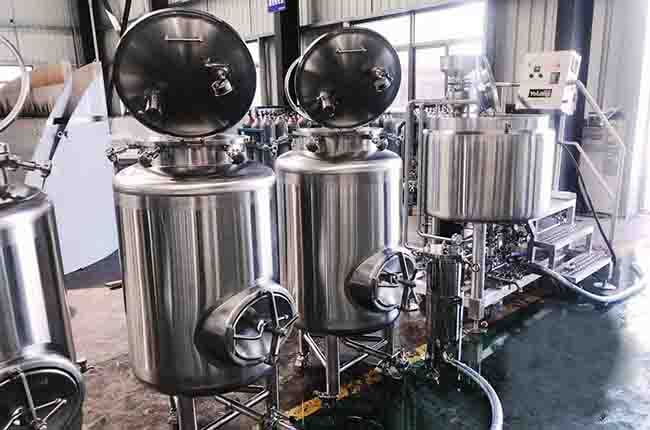
How the 5 Vessel Brewhouse Wins in Speed, Efficiency, and Production Capacity
Speed and efficiency are the hallmarks of a 5 Vessel Brewhouse. By allowing simultaneous operations and precise control, these systems drastically reduce brewing time while maintaining—or even enhancing—quality. This combination of speed, efficiency, and capacity makes them a top choice for breweries looking to dominate the market.
FAQ
| Question | Answer |
|---|---|
| What is the main advantage of a 5 Vessel Brewhouse? | Speed, efficiency, and the ability to handle large-scale production. |
| How does it compare to smaller systems? | It offers better efficiency, flexibility, and capacity but comes at a higher cost. |
| Is it suitable for small breweries? | Not always—it’s best for medium to large-scale operations. |
| What is the typical cost range? | Costs can vary widely, from $500,000 to over $1 million, depending on features. |
| How long does installation take? | Usually between 3 to 6 months, depending on the system’s complexity. |
Frequently Asked Questions (FAQ)
- Q1: What daily throughput can a 5 Vessel Brewhouse realistically achieve?
A1: With proper staffing and cellar capacity, 3–5 turns/day is common on 20–60 hL brewhouses; highly automated lines can push 6+ turns/day. - Q2: Which vessel sizing ratios work best?
A2: Typical design pairs mash tun ≈ lauter tun volume (1.0–1.2× brewlength), kettle/whirlpool 1.2–1.5× for high-gravity and trub load, and HLT ≥ 1.5× to support back-to-back brews and CIP. - Q3: What automation features are essential for speed and consistency?
A3: Recipe-driven PLC/HMI, automated valve manifolds, inline flowmeters, temperature/pressure sensors, turbidity sensors on run-off, boil vigor control, and conductivity-based CIP endpoints. - Q4: How does a 5-vessel layout reduce changeover time?
A4: Dedicated vessels allow parallelization (e.g., lautering while kettle boils prior batch), minimizing idle time between mash-in, run-off, boil, and whirlpool. - Q5: What are typical utility requirements?
A5: Steam or electric heating, 208–480V three-phase power, 60–90 psi compressed air, glycol refrigeration, floor drains, and process water capacity targeting 3–4 hL water/hL beer with heat recovery.
2025 Industry Trends for 5 Vessel Brewhouses
- AI-assisted scheduling and boil control: Model predictive control tightens mash ramps and boil-off, improving repeatability and cutting energy 10–20%.
- Low-oxygen practices at scale: Automated deaerated-water dosing and transfer blanketing improve shelf life of hop-forward beers.
- Heat and CO2 recovery mainstream: Stack vapor condensers and compact CO2 recovery skids increasingly specified for 30–60 hL lines.
- Interoperability by default: OPC UA/MQTT connectivity from brewhouse to cellar/packaging for unified KPIs and multi-site benchmarking.
- OT cybersecurity requirements: MFA, role-based access, and segmented networks now common in RFPs for new systems.
2025 Benchmarks for 5 Vessel Brewhouse Performance
| Metric | 2022 Typical | 2025 Best-in-Class | Notes / Sources |
|---|---|---|---|
| Water use (hL water/hL beer) | 4.5–6.0 | 2.8–3.5 | Brewers Association Sustainability Benchmarking: https://www.brewersassociation.org |
| Brewhouse energy (kWh/hL) | 8–12 | 5–8 | MBAA case studies; heat recovery + boil control: https://www.mbaa.com |
| Changeover (brew-to-brew, min) | 45–60 | 20–35 | Parallel operations + auto-valving |
| Product loss (brewhouse→bright, %) | 3.0–5.0 | 1.5–3.0 | Trub/yeast handling; inline sensors |
| Inline DO after transfers (ppb) | 80–150 | 20–50 | ASBC methods: https://www.asbcnet.org |
| Unplanned downtime (%) | 6–10 | <3 | Predictive maintenance, remote diagnostics |
Latest Research Cases
Case Study 1: Parallelization Uplift on a 5-Vessel, 40 hL Line (2025)
Background: A regional craft brewery hit a throughput ceiling at 3 turns/day despite ample demand.
Solution: Implemented recipe-driven valve sequencing, turbidity-based lauter cutover, AI boil vigor control, and added a vapor condenser to preheat HLT.
Results: Throughput increased to 4.8 turns/day; energy intensity fell 16%; water use improved from 4.7 to 3.4 hL/hL; sensory variance (IBU, color) tightened by 20%. Shared in MBAA district seminar (2025).
Case Study 2: LODO Upgrades Extend IPA Shelf Life (2024)
Background: Flagship IPA showed hop fade by day ~70 in ambient distribution.
Solution: Integrated deaerated-water loop, automated CO2 blanketing on lauter-to-kettle and whirlpool-to-FV transfers, inline DO monitoring at critical points.
Results: Post-transfer DO reduced to 25–40 ppb; shelf life extended to ~120 days; stale/oxidized complaints down 50%+. Referenced in Brewers Association packaging webinar (2024).
Expert Opinions
- Dr. Tom Shellhammer, Professor, Oregon State University
Viewpoint: “In high-throughput brewhouses, control of oxygen and thermal profiles is decisive for hop aroma retention—automation that manages purge and boil vigor pays back quickly.” Source: OSU Hop & Brewing research talks/publications. - Mary Pellettieri, Brewing Quality Consultant; Author, Quality Management for Breweries
Viewpoint: “Build quality into the 5-vessel workflow with calibration, SPC at critical points, and validated CIP. Consistency scales only when QA is embedded in automation.” Source: Industry workshops and QA literature. - Ashleigh Carter, Co-Founder and Head Brewer, Bierstadt Lagerhaus
Viewpoint: “Size tanks and schedules for the beers you actually brew. Double-batching and disciplined timing beat raw capacity for real-world speed.” Source: Conference panels/interviews.
Practical Tools/Resources
- Brewers Association: Sustainability benchmarks, packaging QA, calculators — https://www.brewersassociation.org
- ASBC Methods of Analysis (DO/TPO, bitterness, pH, micro) — https://www.asbcnet.org
- MBAA Technical Quarterly & webinars (automation, heat recovery, LODO) — https://www.mbaa.com
- OPC Foundation (OPC UA) for brewery interoperability — https://opcfoundation.org
- NIST Cybersecurity Framework for OT segmentation and access control — https://www.nist.gov/cyberframework
- DSIRE USA: Incentives for high-efficiency boilers, heat recovery, electrification — https://www.dsireusa.org
- Brewer’s Friend and BeerSmith for planning and efficiency tracking — https://www.brewersfriend.com | https://beersmith.com
Last updated: 2025-09-01
Changelog: Added 5 targeted FAQs, 2025 trends with benchmark table and sources, two recent case studies on parallelization and LODO upgrades, expert viewpoints, and practical tools/resources tailored to 5 Vessel Brewhouses
Next review date & triggers: 2026-03-01 or earlier if BA/MBAA release new benchmarks, ASBC updates oxygen methods, or major vendors introduce new AI/MPC brewhouse controls
Share this entry
Interested in learning more about Brewing Systems including additional details and pricing information? Please use the form below to contact us!
YOLONG BREWERY EQUIPMENT FAQS
- Commercial Brewery / Craft Brewery / Microbrewery / Nanobrewery
- What is The Difference Between Craft Beer and Industrial Beer?
- The Bespoke Differences In Custom Brewing Systems
- Everything You Need to Know About Kettle Souring
- How to Choose Brewing Equipment for Your business?
- How To Choose The-Best Partner To Build Your Commercial Microbrewing System?
- Two Detection Sensors That You Need To Use In Your Brewhouse System
- Remote Control Applications in Brewing Equipment/How does it work?
- How To Clean Your Brand New Brewery Tanks?

